Wow! What a year…2023. Yarn, fiber festivals, trunk shows, markets, yarn (yes more yarn), spinning, and making… The best part of my year is having the opportunity to chat with all of you in-person and online. It has been entertaining, uplifting, and educational. Thank you for all the great conversations, ideas, and project shares. A huge thank you to everyone who has visited and purchased something from my Etsy shop! It makes me so happy to be able to help people successfully start their spinning endeavors with the spindle kits. I know it’s working, evidence from all the lovely reviews you all are leaving. *warm fuzzies*
As we step into 2024, let’s keep in mind, that each time we spin and every stitch we create not only provides us with functional, useable yarns, garments, etc., it keeps us connected to tradition and like minded folks. Keeping our hands and minds busy with fiber grounds us, gives us purpose and a sense of accomplishment. I’m thinking, more must be better. Let’s do as much as our schedules allow. Let’s set our intentions to be mindful, creative, and supportive of each other in our spinning, knitting, and crocheting as we make our way through 2024.
Here’s to a year filled with cozy woolly fibers, handspun yarn, handmade garments, and community connections. Happy spinning and making in 2024! Cheers!
October 6th – 15th, 2023
Central Texas yarn crawl kicks off today. Head over the The Best Little Yarn Crawl in Texas website to download the treasure map and preview participating shops. Visit shops, get stickers, enter to win prizes. Grab a yarn or two or ten along the way. It’s a great time to stock up for gift making and holiday prep too. Wouldn’t it be fun to visit all thirteen shops? What a great little adventure. I’d say a good challenge too. There will be some driving involved. Day(s) trip planning is in order. The shops range from Bandera to Bastrop and Georgetown to San Antonio. Each shop is different and you’ll find a variety of specialties on the crawl. So Much Fun!!

Fiber Fate will be at Farm to Needle Yarn Shop in New Braunfels for a Trunk Show and spinning demonstration all day Saturday, October 14th. Visit Farm to Needle Saturday, October 7th, for a Punch Needle Art Exhibit and Mobile Fiber Petting Zoo. I love this shop. It’s got a nice yarn vibe inside, a nice sitting area outside.

Not to distract from the yarn, but there is also a popcorn shop next door that has an amazing array of sweet and savory popcorn flavors. They have A LOT to choose from. I bought the the hot dog & ketchup flavor for my family to try and it was a hit. If popcorn isn’t your thing, and you need to take a quick refuel break during the crawl, there’s a coffee shop and other food options all within a minute or two walk of Farm to Needle Yarn Shop. Check out the the Gruene Lake Village website for details and hours.
See you soon!
What a fantastic start to 2023. Since March I’ve met so many new fiber people. It has been incredibly nice to meet each of you, hear about your fiber spinning and processes, and share a little bit of Fiber Fate with you. We met at Bandera Fiber & Arts Festival, Farm to Needle, Yellow Rose and Wimberley Market Days. I am looking forward to keeping in touch and meeting more of you fiber lovers and makers throughout the year. Thank you for all the encouragement and inspiration!
Creating more opportunities for us to meet. I am very excited for all the shows and teaching I’ve been able to participate in this year. I’ll be at Houston Fiber Festival for the first time in June. Head to Kerrville for Texas Fleece & Fiber Festival (previously Kid n’ Ewe) in October. I will be announcing and posting about a few other opportunities as plans solidify. And don’t forget, there’s always Wimberley Market Days the 1st Saturday of each month (July is iffy at this point). Check-in at my Shopping/Events page to see current details on where we can meet in person.
Fiber Fate Shop Announcements:
As of March, I am an official member of The Livestock Conservancy. Currently I have 2 handspun yarns (Leicester Longwool) and several commercially processed fibers (Shetland, Jacob, Black Welsh Mountain) available and ready that will fulfill passport requirements. Behind the scene, I have four types of fleece being hand processed for upcoming fiber and yarn sales (Teeswater, Jacob, Shetland, and Churro).
In April, I became a proud supplier of Eucalan wool & laundry delicate wash. I have been using Eucalan regularly for well over 10 years. As you can imagine, with the creation of Fiber Fate a few years ago, it has been an especially useful tool in the production of my yarns. I use it on all my handspun and hand dyed yarns in the finishing stage. I’ll have that available online very soon. Feel free to contact me directly via email if you are in dire need. I’m happy to deliver locally, and pop it in the mail otherwise.
See you soon!
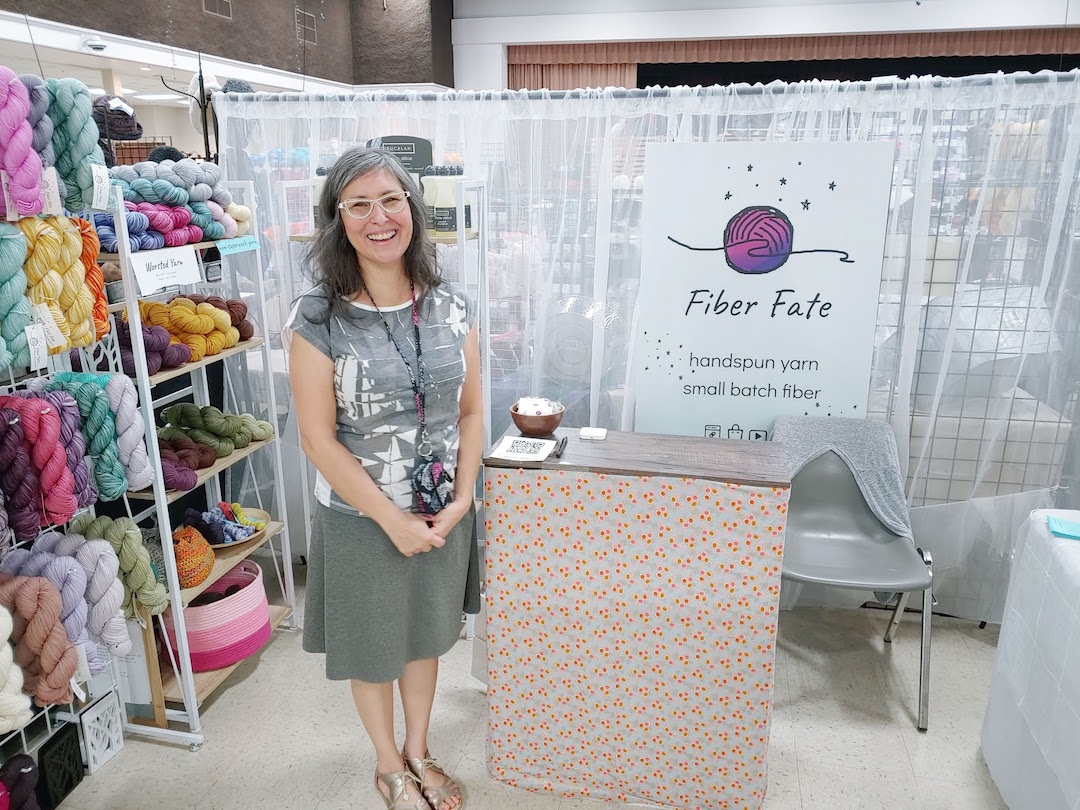
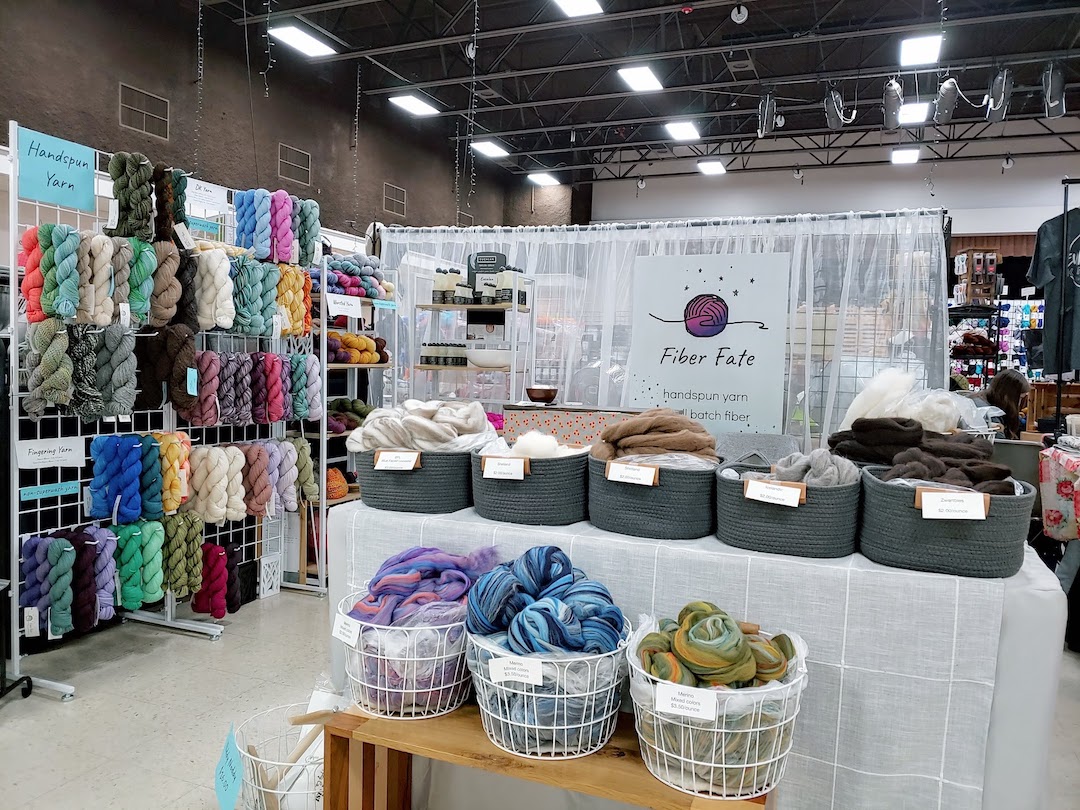
In centuries past, Distaff day marks the day women resume their everyday household duties of which spinning for textiles was a major part of. People returned to normal duties following the day of Epiphany, a religious holiday where the Three kings arrived to meet the son of God, Jesus. Epiphany is the realization.

There are numerous websites, that for the most part, have all the same information about Distaff Day. I liked these two (note, I didn’t copy the actual link- copy paste in search should pull it up as if it were a link):
nationaltoday.com/distaff-day/ – states what it is, followed by some history, followed by a few sections of fun extras. Scroll down to Why We Love Distaff Day…I like that little section.
almanac.com/fact/distaff-day-the-day-after-epiphany-january-holiday – info about the day, plus a silly little, almost nursery rhyme, tale of historic tradition.
On this Distaff day, I have enjoyed hours of easy online research. Thinking of distaffs and spindles and spinning wheels, I couldn’t organize a solid mental timeline for the history of spinning. Oh certainly I’ve picked up information here and there, only to quickly not file it away. So off I went to create a brief overview of the history of spinning. Don’t worry, my notes fit on a 5 x 8 inch note page. It is a quick rundown of a few key things.
*No one actually has a date for when drop spindles started being used.
*Distaffs are long (or short) sticks used to hold wool for a spinner.
*Spindles date back to Neolithic time. Neolithic time was 7000 – 1700 BCE. Neolithic, which is also known as New Stone Age is the period of time people started to live in settlements, started farming and domesticating animals.
*Middle Ages, also know as the Dark Ages spans from 476 AD (the fall of Rome) – 1450 ish AD when the Age of Discovery began. Age of Discovery is 1400 – 1600 AD.
*No one actually has a date for the origin of the spinning wheel either. It is known to have happened between 500 – 1000 AD. Note, all textile making was done with spindles for 8,000 to 9,000 (probably more) years. That’s a lot of spindle spinning.
*The earliest drawing found of a spinning wheel dates 1035 AD.
*Spinning wheels were invented in the 11th century. First type was Charka style used for cotton. The spinning apparatus did make its way across countries over years and finally arrived to Europe approximately 1200 AD.
*NZ Spinning Wheels: “The first known pictures in Europe of spinning wheels are in several illuminated manuscripts from around 1335-1340.” and “The first picture showing a flyer and bobbin dates from the 1480s and comes from Southern Germany.”
*Very early 16th century spinning wheel starts to look more like our “modern” ones, they have bobbins and flyers!
*Thoughtco.com: “Around the year 1533, a spinning wheel featuring a stationary vertical rod and bobbin mechanism with the addition of a foot pedal debuted in the Saxony region of Germany.”
*1764 the spinning jenny was invented – key in textile industrialization.
From the 18th century forward, we have documented many many many different spinning wheel types. Pretty much all of them are based on the design from the 16th century with bobbins, flyers, and treadles. Many of those spinning wheels have a distaff to hold the wool or plant fibers while the spinner creates yarn and/or thread.
While I do not use a distaff regularly, I do spin almost daily. Spinning is alive! Although it’s not part of household duties anymore. It is a valuable part of the past and is still valued today. Maybe more so as we find ourselves inundated with fast fashion and over manufactured goods that really aren’t that healthy for us. I won’t get on a soapbox. Speaking only for myself, spinning and working with wool makes my heart sing and gives me purpose. The artist in me wants to design and create and make something functional and beautiful. So, it’s Distaff Day, time to get to work.
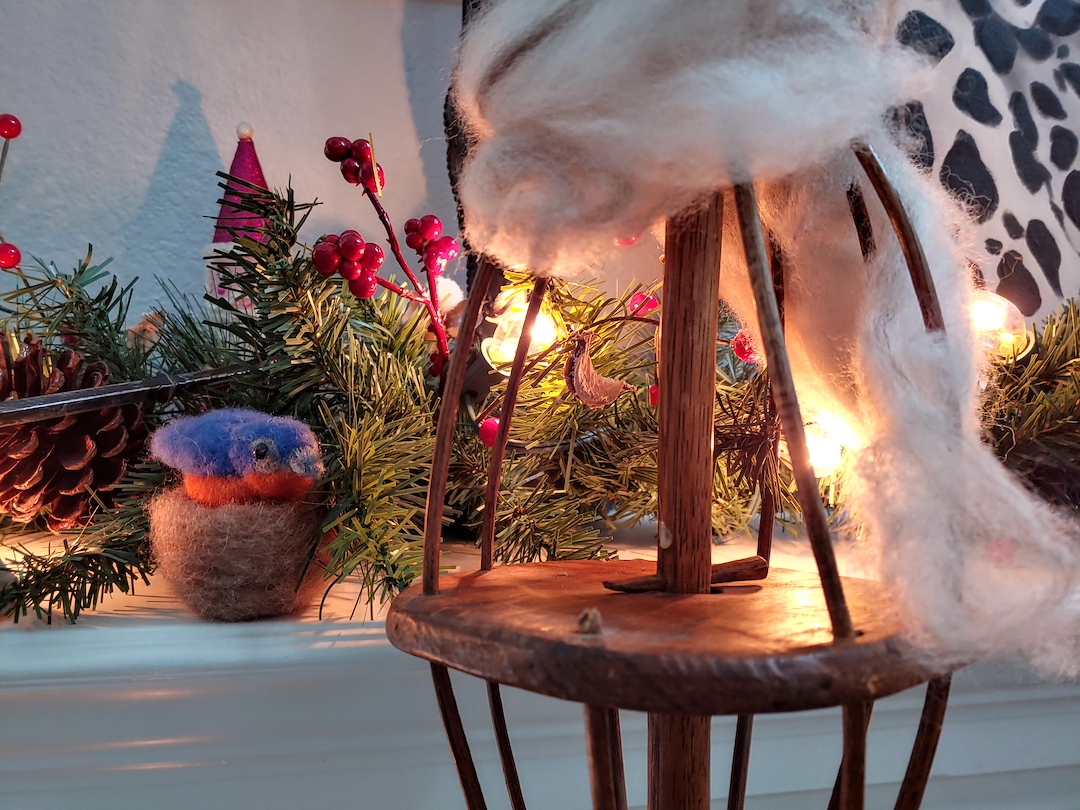
All things wool!! All things wool!! If only I had the courage (and time) to go around chanting this in public. Can you imagine me downtown, in front of the congress building, holding up a sign, chanting for change among all the other special topics of the times. Haha, someday… There are many issues to grapple with and figure out. I tend to focus a lot on environmental health. Environmental health directly relates to everything – the health of our animals, our food, a healthy textile industry – it all leads back to our personal well being. I’ve always been a fan of natural. Keeping things simple and as close to natural as possible. It seems almost silly to say out loud. It seems like an obvious choice. But if you take a good look around, it can be quite complicated. I will not attempt to dive into particulars with this simple post. There is much to ponder and much to learn.
As I do my daily work of spinning, washing and hand processing raw fleece, and small making projects, I wonder about being mindful of the things we need and hold off on the things we are told we need. I think of ways to cut back on synthetics of all sorts, especially everyday fabrics and plastics. I wonder if we can grow the culture of making essential clothing and other necessities with our own hands. I wonder how much change could happen if many more of us take a tiny bit more time to seek out natural products made by-hand from small businesses (local or otherwise). I wonder if we could ever grow forward by embracing handmade items for everyday use (not just that one special thing). I wonder, if we do all that (or even some of it), would we guide the way the textile (and food) industry functions, especially in areas like sourcing and waste.
I’m not attempting to make any political statements or start a war on industry. Haha, no, that’s not me. I am but one simple wool loving person. I’ll do my part and maybe a little more given the nature of my small business. I advocate for small change over time. Reverse the process (a lot or a little) of how we got to this point of waste in the world. It is possible to find balance. I’ll start with balance in daily life. I’ll keep working (mostly silently) on wool projects in my “wool office”. Spinning provides me with balance and purpose. What I do, is small, no doubt, but it’s small initiatives, work, joy, appreciation, support that lead to impacting others directly and so many times, indirectly and unexpectedly.
I attended this outdoor gathering for the first time last year purely as a consumer. It was a lovely sunny day and I was eager to get out of the house to shop the small businesses and see what the heck was going on out there at the Blue Mule Winery. Lots of us where just coming out of our COVID lockdown at that point, eager to get out and about. Despite a tad bit of wind, it was a wonderful event with lots of yarn (of course) and other fibery things, music, classes, a food truck, and drinky-poos for some extra delicious relaxation.
This year, April 2022, I will be vending and teaching at this lovely event. I’ll have a variety of handspun yarns and spinning fiber – batts, flicked fiber, and washed fleece available.
Sign up for my Beginning Drop Spindle Spinning class and learn some of the basics of spinning yarn. My class starts at 10:30 am and runs two hours until 12:30 pm. It’s a great time slot! You read more about it and sign-up at texasyarnloversevent.com.
If you take my class, you will have plenty of time to get into the event and get your bearings and maybe even browse a few vendors on the way in. There will be plenty of time after to relax, get some food, drinks, sweets, shop, and enjoy the serenity of being away from the city and in the fresh calm outdoors of the Blue Mule Winery. In addition to the big outdoor tent area, there is plenty of one-off spaces to break for knitting, sharing with friends, or some cherished self time. It would not be weird to bring a blanket or a lawn chair to relax on. Hopefully, like last year, it’s another wonderful sunny day.
For all you knitters our there, there is a KAL! It is scheduled to start April 3rd. The knit project is by Designer, Morgan Wolterdorf. She announced the design on her Instagram account @morthunder. Follow her on IG and sign up at her website for additional information about the KAL. The final piece of the KAL will be done at the Texas Yarn Lovers Event, April 23rd, in person with Morgan. There will be a group picture of everyone with their project.
Texas Yarn Lovers Event – Saturday, April 23rd, 2022
Blue Mule Winery – 8127 N FM 1291, Fayetteville, TX 78940
https://www.texasyarnloversevent.com/
So much to look forward to.
Today is the first day of autumn – the Autumnal Equinox. It’s one of two days per year there are equal amounts of day light and night. Starting tomorrow, the sun will start rising later and the darkness of night will ease in a little earlier. Shorter cooler Autumn days are here.
I can see and feel the change here in Austin today. I’m not sure I’ve ever been more aware of this change than I am this year, today. As I hopped out of the car this morning for our daily school drop-off, there was a breeze, an almost cool breeze! Our summers hover around 100 degree with many days of high humidity. It can be somewhat oppressive and the heat gets exhausting. So, while a breeze seems minor, it was surprising and a big change from what we’ve experienced in many months. The air distinctly different from previous summer days. The air is lighter, cooler. Sweeping breezes have refreshed the air, making way for crisper fall, and soon winter, days ahead.
On this balanced day, it seems fitting to work outside. I’ll absorb the sun, listen to the trees, and smell the fresh air while spinning, while crocheting.
I mean year.
ok, ok, I was feeling a little defeated as of New Year’s Eve eve. Didn’t even come close to what I had envisioned myself getting wrapped up for the year. My End of Year Cram was more like an End of Year Dashed Fiber Hopes. My little experiment of making the end of the year a wool wrap up didn’t really pan out. I won’t ramble on about why. It’s all the same normal reasons. Instead of feeling bad or awkward, I’m just going to keep moving forward. Positive is productive (btw, that’s about as far as I go for inspirational speech’s) and that’s where I want to be going into this new year. Focus on the things I did accomplish and what I have to look forward to going into 2021.
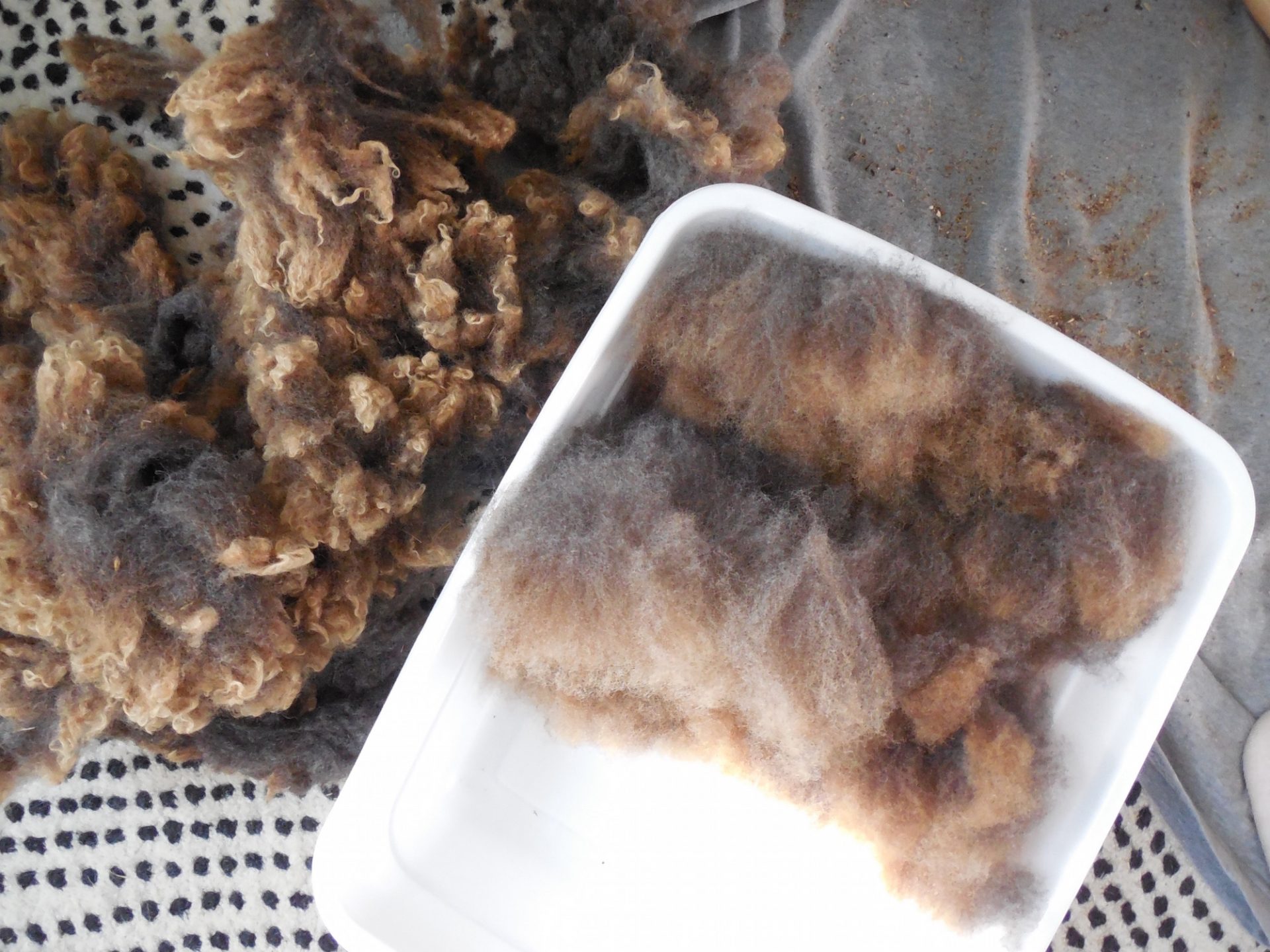
The year ended. Those final hours, were in fact, quiet productive. Hours of spinning and spending quality time with some Harlequin fleece before and in between playing games and enjoying food and desserts with my family – my husband and daughter. That’s a pretty darn great day in my book. Truly a good one – New Year’s Eve 2020 is right up there as one of the best I’ve ever had. All the basics (health and wool included) and good company, what more could anyone ask for.
End of Year Cram successes, albeit small: whittled down a one pound bump of Harlequin roving with four more ounces spun and plied into 2 two ounce skeins. I worked those pink rolags! Those six ounces of fluff are spun into a lovely yarn. I started hacking through some Teeswater locks. Really more like gentle snipping. So unfortunate I felted part of the one pound batch shown in my picture list two posts back. Sad, but still completely useable. The locks felted only at one end, which makes me think I just didn’t prep it properly before washing.
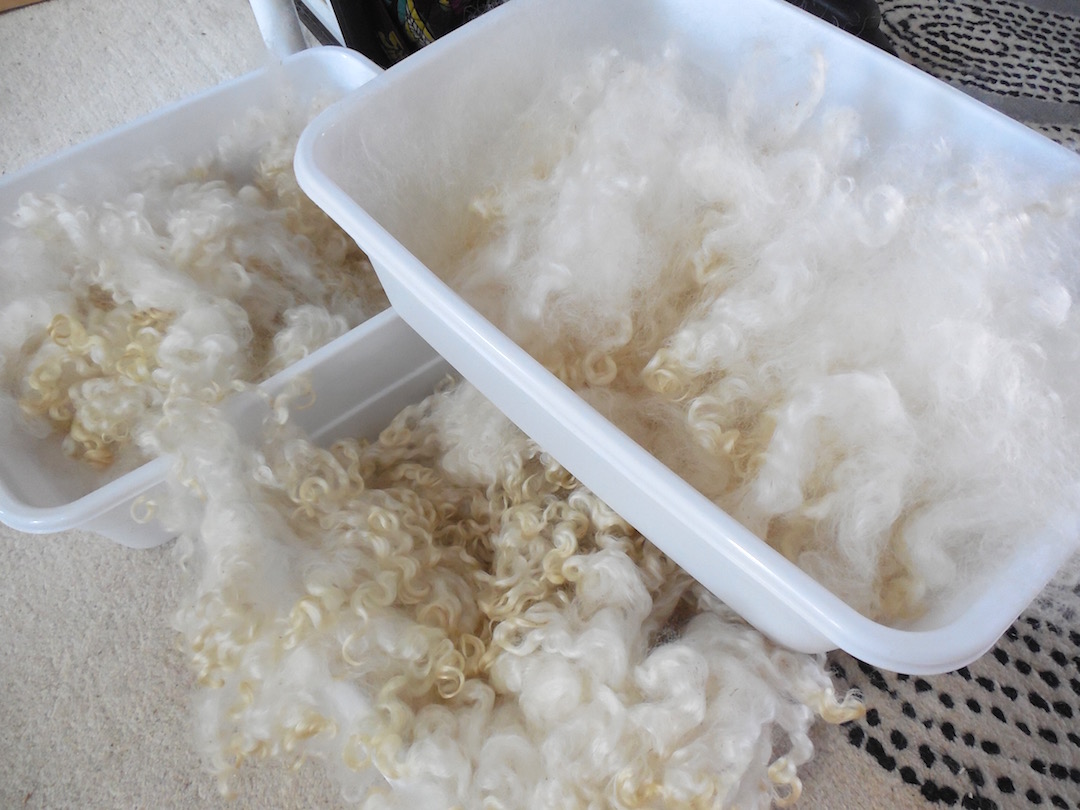
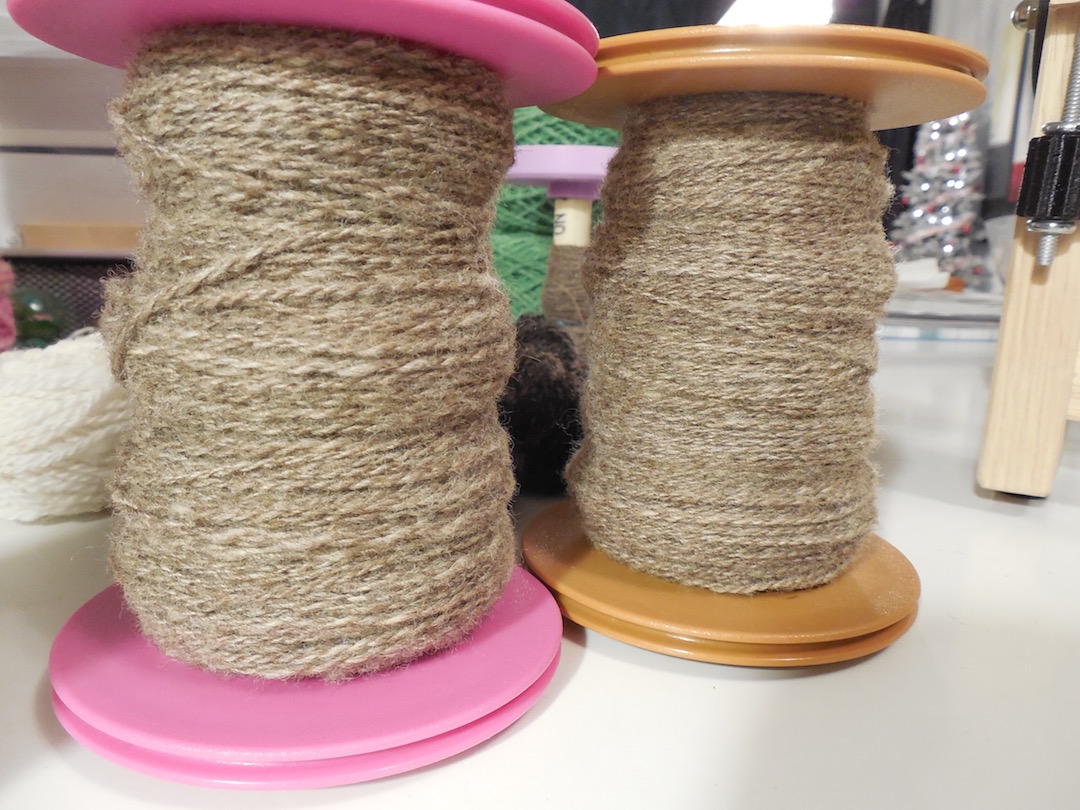
In 2020 I learned how to use support spindles and I started knitting! Knitting is an extra big one since I have been meaning to pick it up for many many years. I have done three whole swatches and entirely made one scarf. So much progress, lol!

Hello 2021, looking forward to learning new skills and honing the one’s I have. I am excited for all the wool and yarns to come. Happy New Year everyone!!
Last I wrote, Jacob is great, but didn’t thrill me. I implied the ol’ “it’s not you, it’s me” excuse to not explain anything. Even as I wrote it, I kept asking my self “but, why?”. Why do I feel like this? What’s not to be thrilled about? By all standards of measure, it’s a great fleece. What do I not like about this fleece and maybe Jacob in general? I can’t just go around thinking I dislike a breed without recognizing the reasons why.
I’m fairly new at hand processing wool – about 2 1/2 years of experience. In the world of wool and spinning is not a long time. Especially now, I feel like it’s important to sort out my thoughts about each fleece I process. Sorting out the more technical aspects is pretty easy. Using guidelines of the breed to assess what your working with really gives you an opportunity to learn the breed. Whether your fleece meets all the standard criteria or not, working raw fleece to yarn gives great insight into that breeds wool characteristics.
“Too medium” just keeps running through my head. But really, all that means is I need to put more thought into this. I need to discover just what too medium means. As of my last blog entry, I had only spun a very small sample of this Jacob fleece. It had been right after washing, before I flicked nearly the entire fleece. So often, from even a small sample spin, I get that “ok, I see what this wool is all about”. I really get to the heart of the characteristics – the length, the crimp, the softness or coarseness, the loftiness or silkiness – the combination of characteristics that make the wool special in it’s own right. This fleece did not want to reveal itself right away. Oh the mystery…
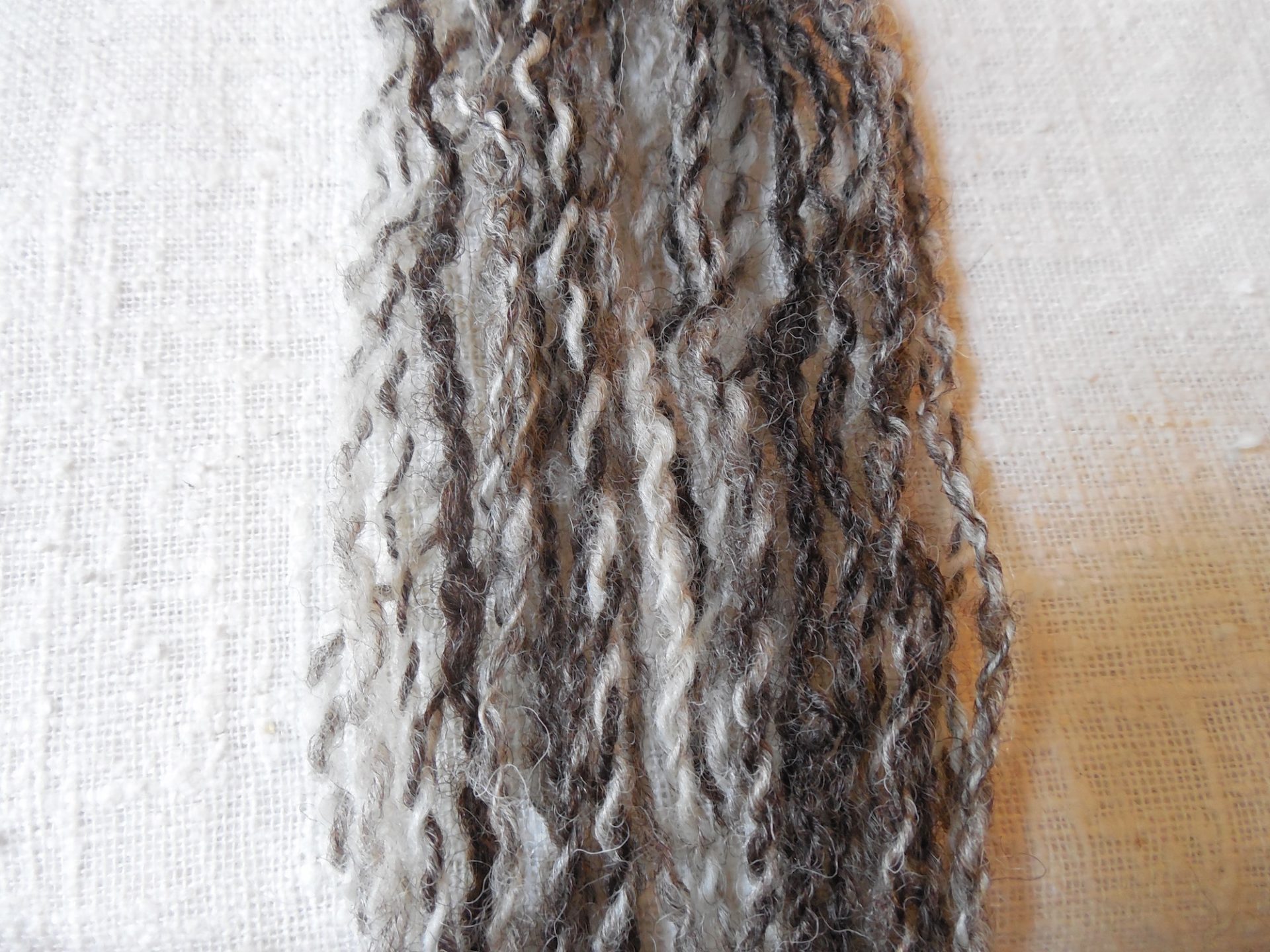
My first mistake was only spinning one little kind of sample. Making a judgement from that, is just not fair. I should know better and I usually do. Normally I sample spin several methods, pull them off the wheel and study them to see which one works best. I have now spun two more samples that are larger in order to get a better understanding. I can still say, this is a Medium wool. In fact, I can’t say that enough.
Flicking: it was deceptive. It looked as though it would flick easily. It was actually quite difficult to get through each lock. No, there was no matting at all. I experimented with two types of flickers and ended up using both throughout. Some of the locks needed a good whacking to loosen up the wool (again, even though it was not matted or felted). The fibers just held together on both the butt and the tip ends. Especially the tip end though. Even the little amount of VM wanted to stick to the fiber. All of my flicking sessions ended with soar and fatigued wrists and fingers.
Carding: this was a breeze. It went easily and smoothly through the drum carder. I have to say, the batts were quite lovely. I did one solid brown and one mixed color. I only put them through once so the multi-colored was purposely blocky.
Spinning: a nice experience. Spinning was pretty effortless. The wool was easy to manage. I spun one in a backwards draft with a sometimes long draw style just to see. The multi-colored batt was spun short forward. Both methods of spinning worked just fine, drafted consistently. Not too slippery and not too grabby. It was soft, but not too soft, had a sturdy handle with just enough grip.
As far as having similar characteristic to a down breed, well, maybe ever so slightly when spun from hand carded rolags, which was my first sample spin. After having just worked a Suffolk fleece, I’d have to say, “eh, not really super down-like”. Downs have sturdy hefty loft. This Jacob’s loft was a bit mushy. But Hey! That’s not to say something bad. Jacob loft is more delicate which can make for some very nice easy moving draping fabric. Also I’d be curious to try a slightly more mature sheep fleece to see if I’d get the same results. Remember, this is a yearling fleece.
The resulting yarn from any of these spins – worsted, semi-woolen, woolen – would work well for all different kinds of projects and garments.
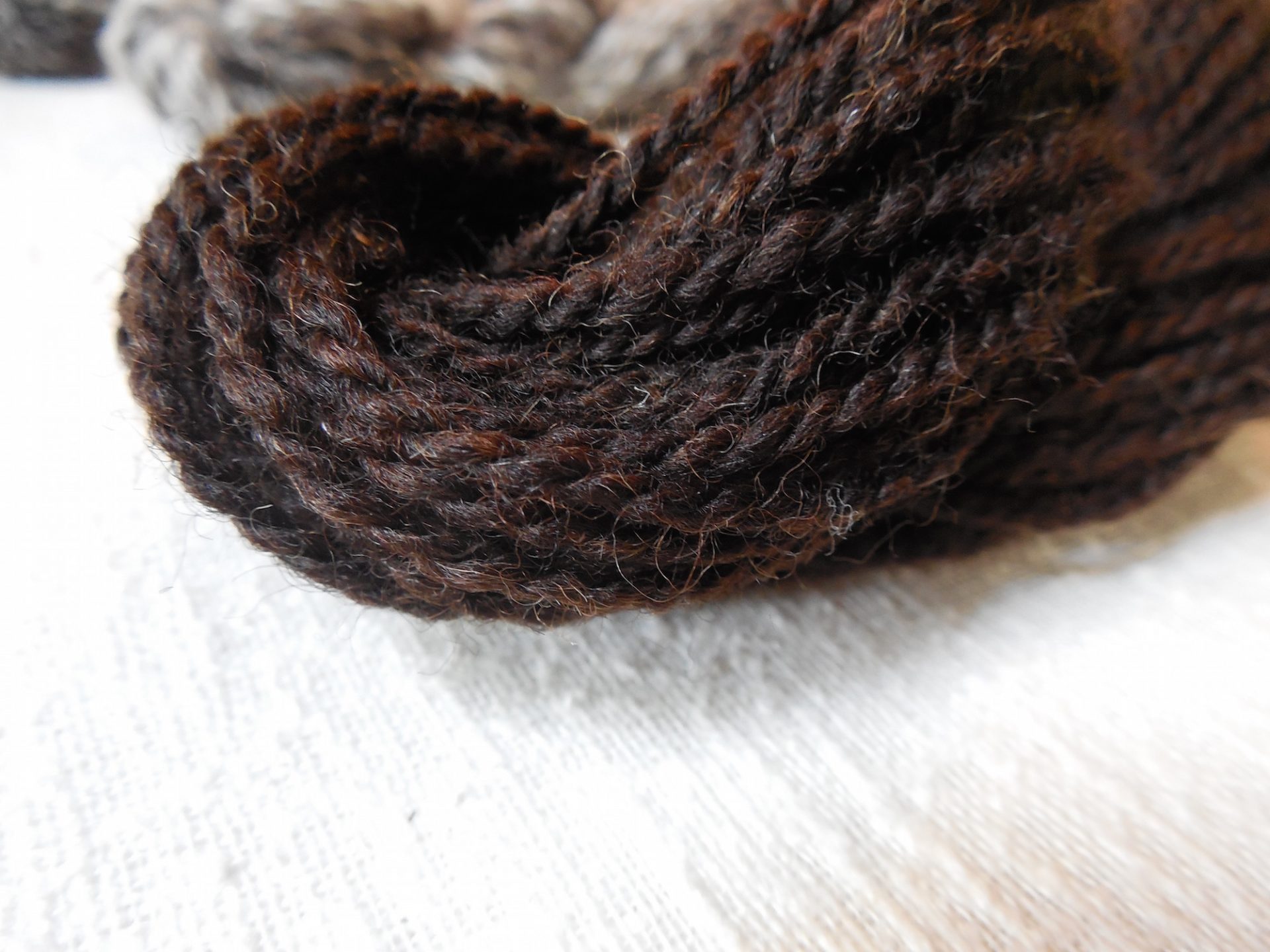
The upside: The dark brown is a rich color that in so very pretty. That dark contrasted with the white really creates a nice pop of color on the multi-colored yarn. You could really get a good variety of color blends with a Jacob fleece. The soft but sturdy nature and medium/low elasticity really makes this yarn very versatile. I am happy with the resulting yarns. My favorite from this fleece is the semi-woolen. Just enough squish to be ultra cozy.
The downside: Obviously, the joint fatigue I experience was a big downer. The VM was hard to get out which means 1) I had to pick at it after flicking, basically it turned into a whole extra step in the processing, 2) it takes a lot longer to get to the fun part of spinning it.
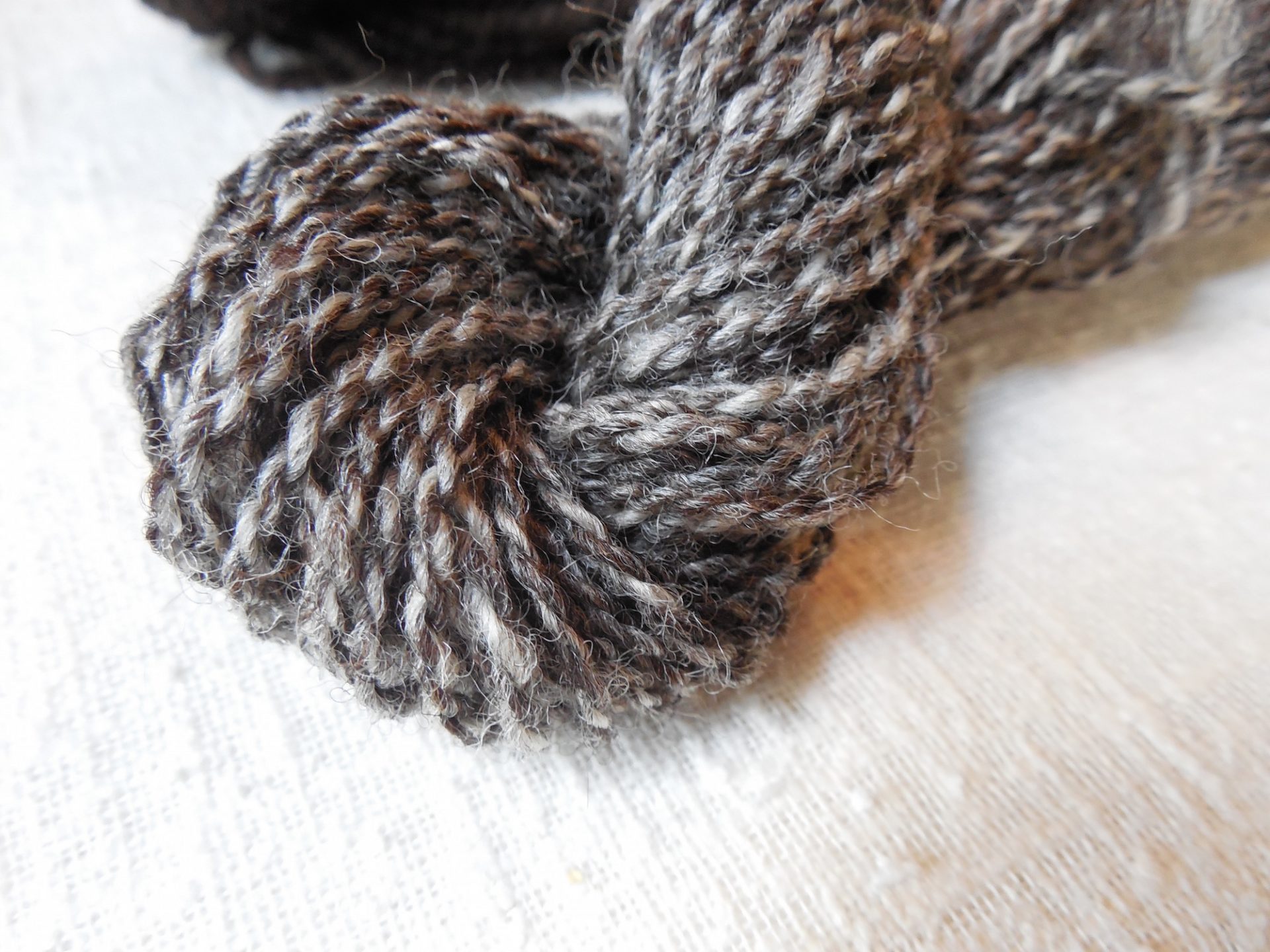
My wow moment did not come until the very very end. After I spun up both of the last samples, took a good look, I finally realized how pretty and functional Jacob yarn is. So often there is an “ah, I love X about this wool” moment early on. When that didn’t happen, I think I unconsciously moved on to my next fleece. Which, by the way, I had just washed. I believe my excitement for the next fleece played a part in my lack of enthusiasm for Jacob. Chalk it up to bad timing. While it’s still not at the top of my list, I like and have a great respect for Jacob. I have come to appreciate the qualities of this wool. It is a nice spin, nothing to technical or annoying about it. The final yarns are quite beautiful.